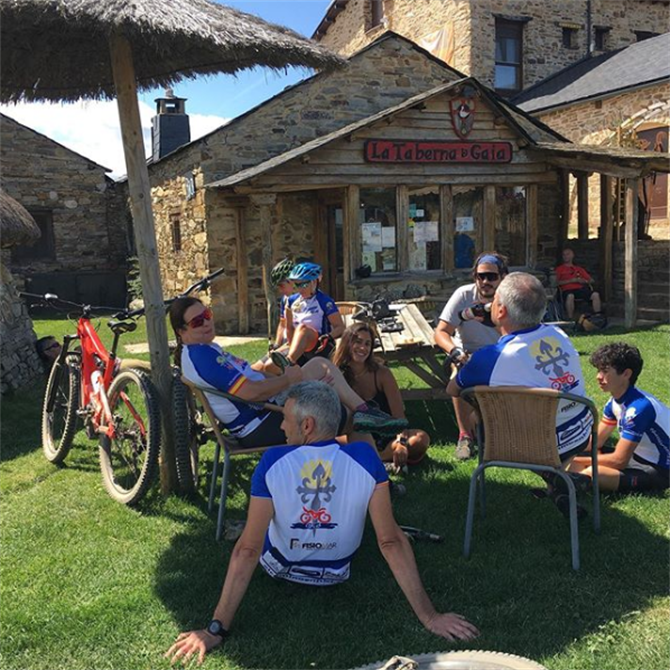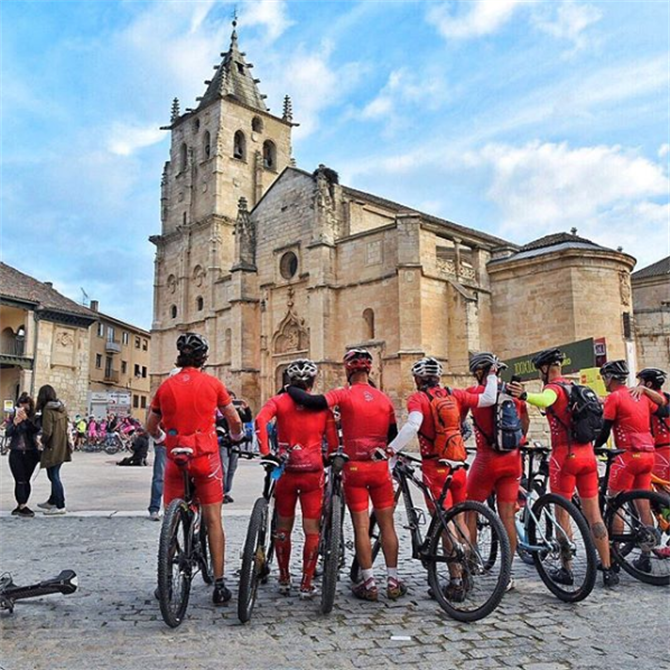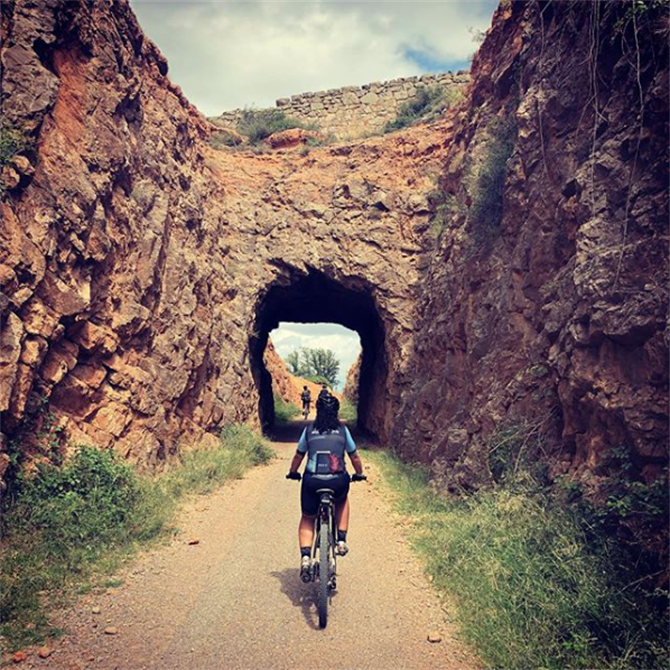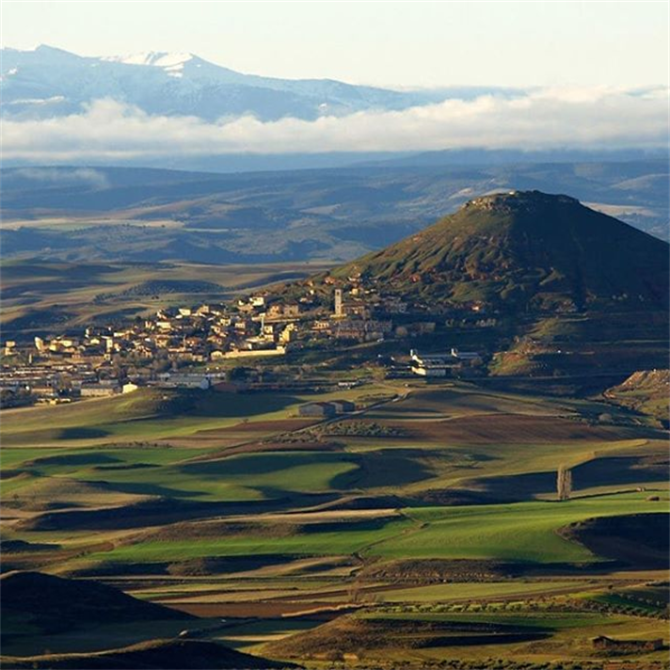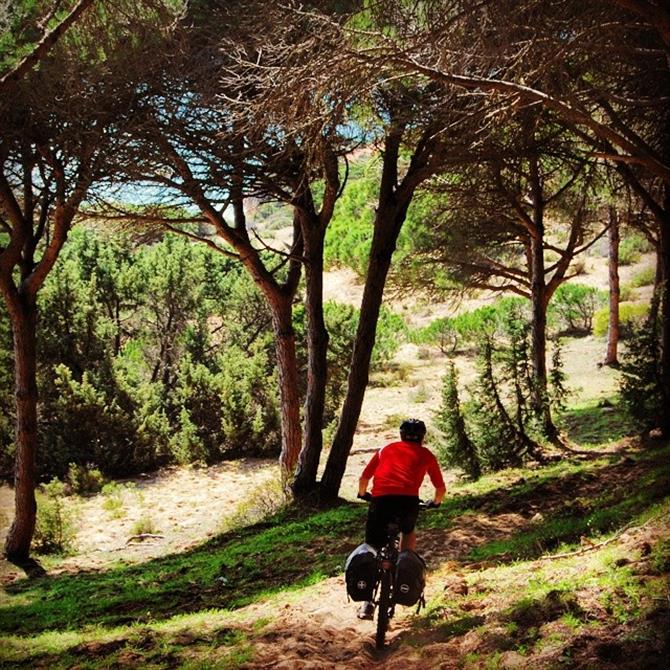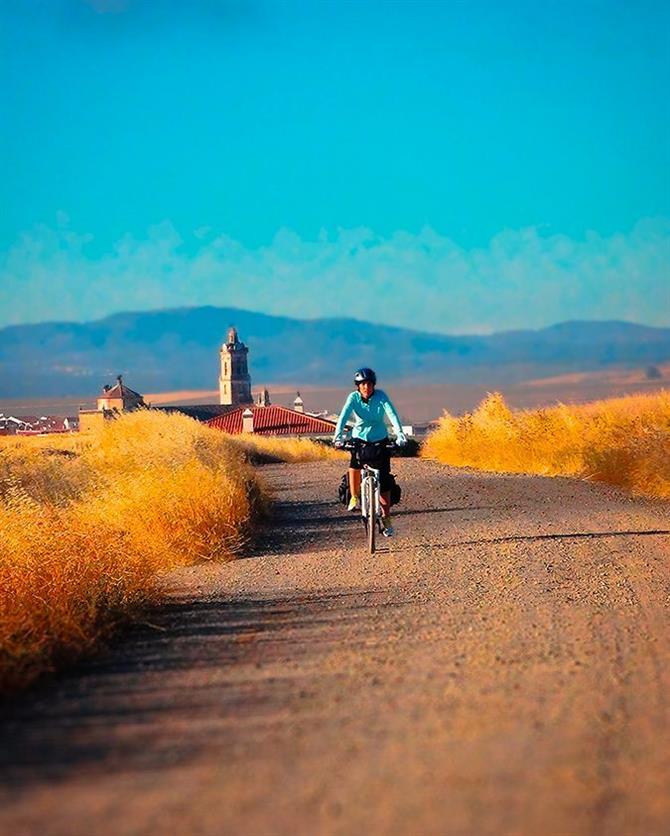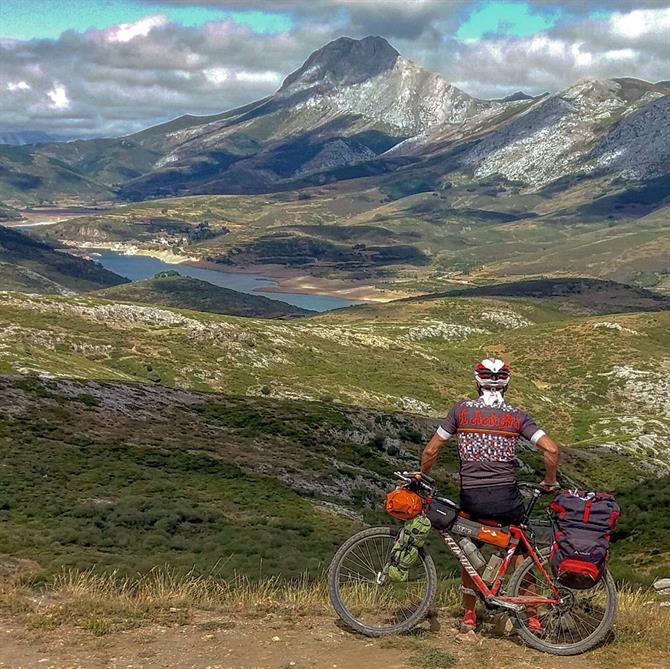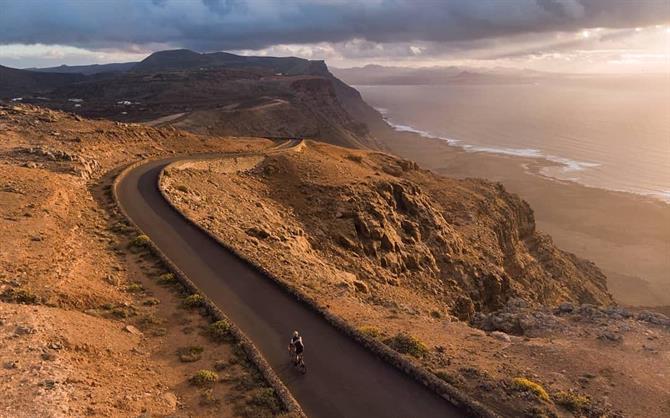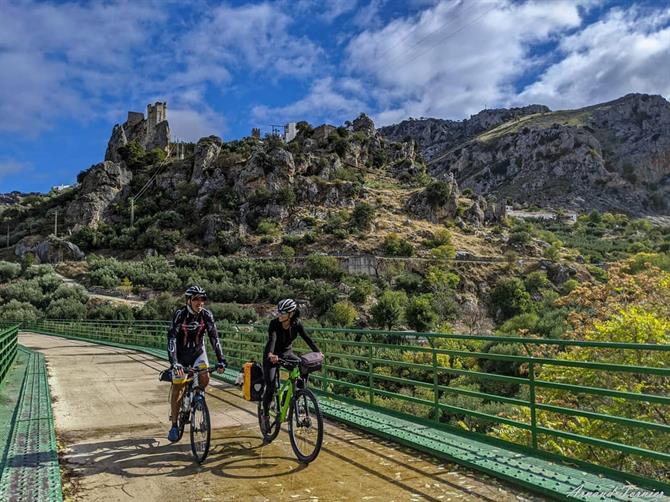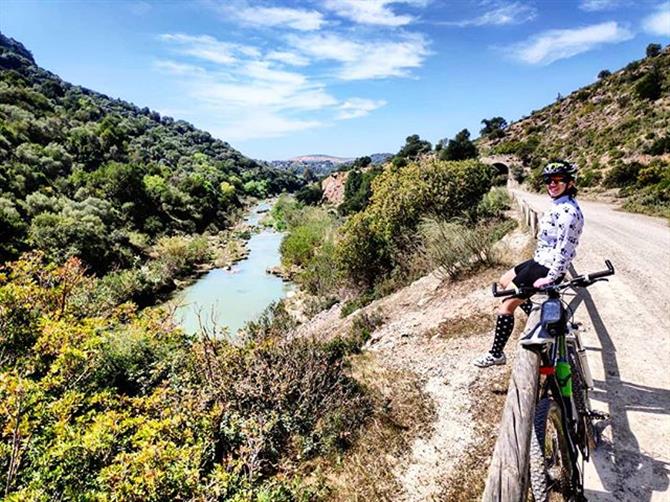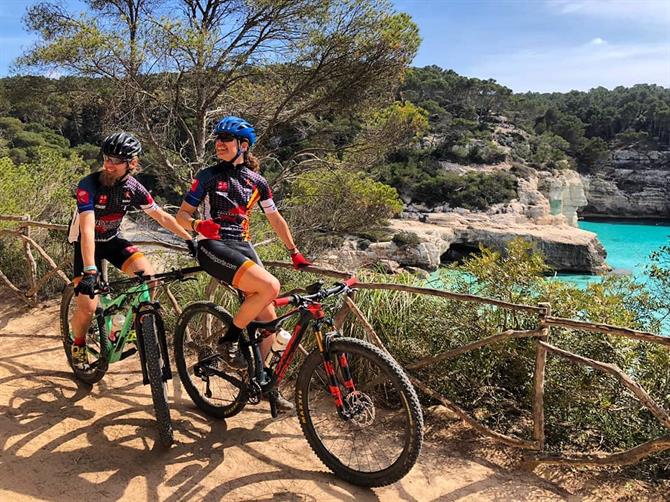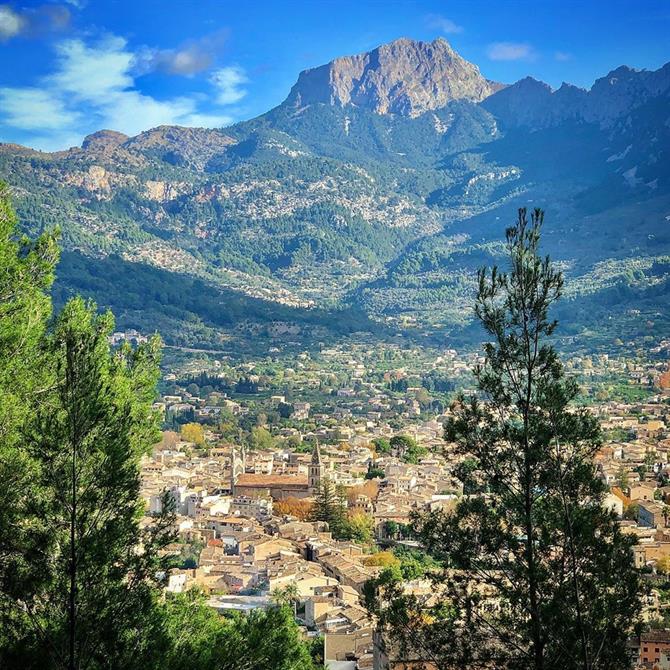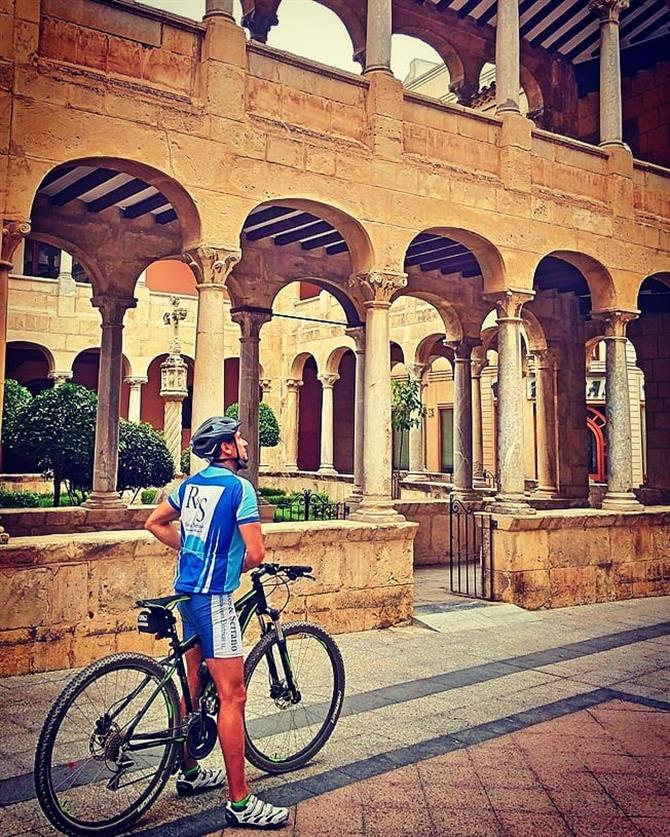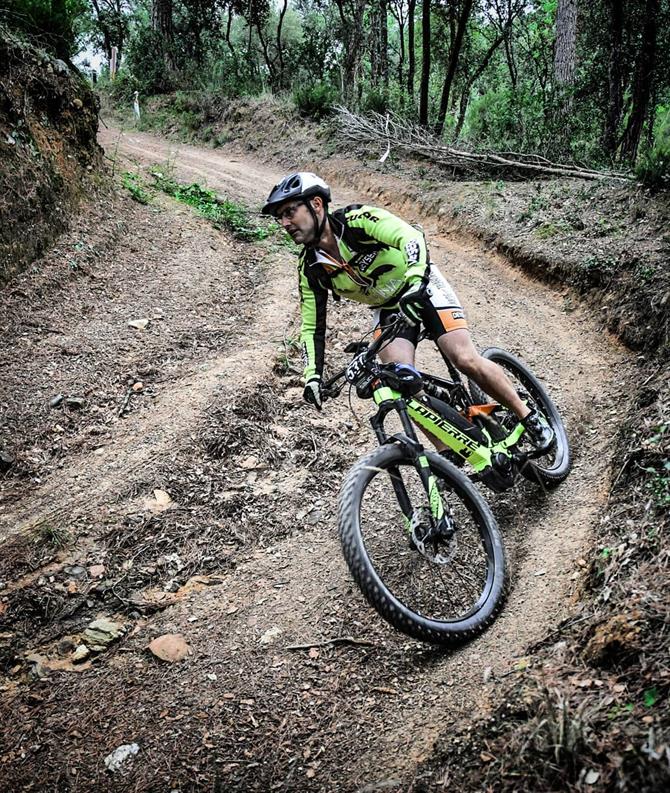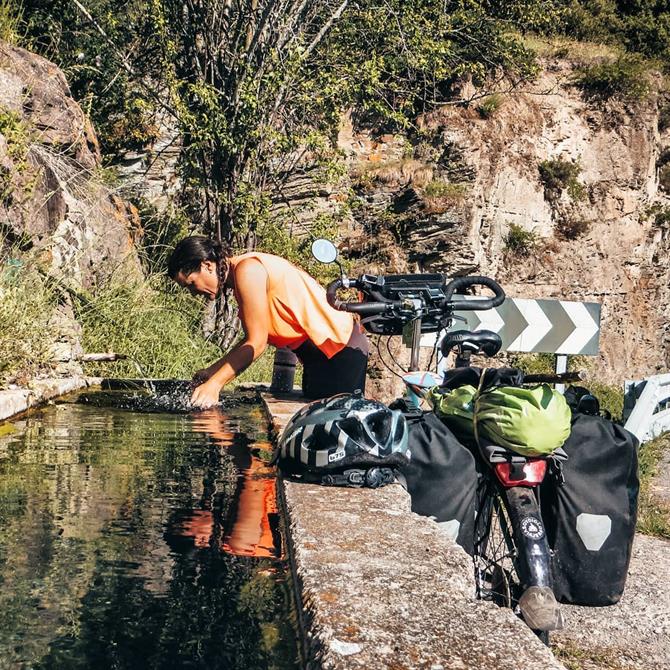Biking holidays are a rising trend. The increasing interest for a healthy, green and sustainable lifestyle is pushing more and more people to get on their bikes, for fun days out, family excursions and commutes to work.
Cycling gives you the opportunity to ride around beautiful scenery and soak it up at your own pace.
Many passionate cyclists, as well as amateurs, look to Spain to prove themselves in a race or just to discover stunning landscapes in a sustainable and relaxing way. This guide has the most popular and spectacular bike routes in Spain, some more suited for biking enthusiasts and some ideal for a fun-filled family day out. Which route will you tackle first?
Camino Frances
The Camino de Santiago is one of the most popular pilgrimage paths in the world. The Camino Francés is the section that runs from Roncesvalles to Santiago de Compostela. About 800 km long, it is one of the most popular routes for those intending to reach Santiago de Compostela by bike.
Along this route, pilgrims will discover some of the most impressive landscapes in Spain and will have the opportunity to explore ancient towns, castles and monasteries.
The route is not particularly difficult but requires a good physical condition. Along the path, you can take advantage of the many pilgrim hostels for a much-deserved rest. Lighten your backpack and enjoy a cold beer with fellow pilgrims after a long day cycling.
CiclaMadrid
CiclaMadrid is a 420 km route to complete in 17 stages. This route links the city of Madrid with World Heritage sites, natural landscapes and Natural Parks where you will pass castles, fortresses, whitewashed villages, monasteries, wineries and vineyards.
You can take different parts of the route depending on what you want to see and who you are cycling with. For groups of friends and family biking holidays, the route in the Aranjuez region is ideal. There are hills, flat roads, olive groves and places to stop along the way for refreshments. For those who prefer mountain biking, head to the route in the Sierra Norte de Madrid and cycle through stunning hilltop villages such as Patones offering picturesque stone-walled houses and great places to stop off and eat.
Via Verde de Ojos Negros
The longest Via Verde in Spain, the Via Verde de Ojos Negros is 160 km of restored railways tracks that cross the provinces of Teruel, Aragon and Valencia. The railway was mainly for industrial and commercial purposes but is no longer in use due to the improvement of the road systems. In this particular case, the route was built to transport mining materials and workers between the Sierra Menara mines and Valencia.
Ojos Negros offers a pleasant surface to cycle on, with stretches of asphalt and paths with compacted soil. It runs through countless protected natural areas and a variety of landscapes. This route is perfect to combine a beach holiday in the Valencia area with sports and sightseeing. Entering the Via Verde in the Sagunto surroundings, for example, will give you the opportunity to visit the historical towns of Segorbe and Jerica, located 20 km inland they are full of natural and historical sights to explore.
Camino del Cid
This long-distance route (around 2000 km) hides a real adventure, not only for the course, that in the first section runs through some of the most fascinating and isolated areas of northwestern Spain, but also because of the legend that lies behind it. The route is named after the story of El Cid Campeador, an XI century knight who was banished from his land and after a period in exile, returned to conquer Valencia.
The route can be divided into ten sections, which lengths vary from 60 to 350 km, covering the distance between Burgos to Orihuela (Alicante). The route is not particularly demanding and can be enjoyed by amateurs and families, as well as long-distance cyclers. The route crosses more than 60 natural areas, 8 Spanish spots declared by UNESCO as World Heritage Sites, as well as medieval castles, towers, Roman and Islamic buildings and countless rural landscapes.
Ruta de Don Quijote
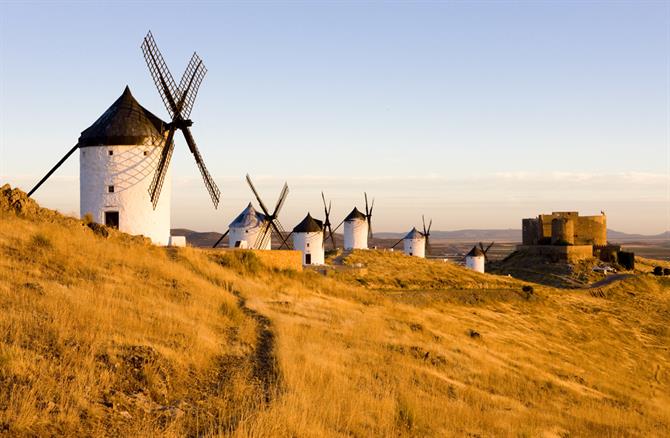
Exploring Spain by bike is a great way to discover some Spanish culture. Along this route, you will see the places that belong to the most famous Spanish novel: Don Quixote. In 2005, coinciding with the 400th anniversary of the novel's publication, a route following the main spots of Cervantes life and the book was officially launched.
Stretching over 2500 km of roads in the Castilla-La Mancha region, the route can be divided into 10 shorter trails, each one passing through some of Spain's most beautiful villages and tranquil rural landscapes. The sites most worth a visit are the historical cities (Albacete, Toledo, Ciudad Real and Zaragoza), beautiful medieval towns (Almagro, Puerto Lapice, Argamasilla de Alba, Toboso), and stunning scenery, especially in Campo de Criptana, (the place of the famous battle with windmills).
The difficulty level is low-medium, due to the fact that for the most part, it is flat. Keep in mind that the region can be really hot in the Summer and that the majority of the surface is compacted soil, so it can become very muddy with the rain the area experiences in the spring and autumn (better for mountain bikes).
TransAndalus
The TransAndalus is a spectacular circular route stretching over 2000 km that runs through the whole region. Touching all the provinces and the most important cities in Andalusia, the TransAndalus is a great way to discover some of the best that southern Spain has to offer, both in terms of natural wonders and cultural and historical sights.
This route is so extensive, offering a mix of signposted and non-signposted sections, it's important to get the right indications about access points and routes from the official web page. Taking this route, you will have the opportunity to stay in some of the best places in southern Spain. One of the most beautiful landscapes along this route is Cabo de Gata in Almería. Be aware that in the summer, temperatures climb to scorching heights, so this route is best tackled in the spring or autumn and is suitable for walking and mountain bikes.
Via de la Plata
The Via de la Plata is part of the Camino de Santiago network. It links Seville to Santiago de Compostela, running through the country from south to north, crossing Andalucia, Extremadura, Castilla y Leon and Galicia.
The route can be done by bike and is 960 km long. It's not an easy one, mixing rural roads with dirt tracks and narrow mountain-like paths. The climate changes radically from the north to the south of the country, making the preparation for the trip not so straightforward. The route offers the chance to visit some of the most beautiful historical Spanish cities: Sevilla, Merida, Caceres, Salamanca, Zamora, Astorga. It runs along an ancient Roman road, but the route was probably already in use in prehistorical times.
TransCantabrica
For nature and mountain bike lovers, this route offers 600 km of dirt tracks and narrow paths that run across the forests and mountain landscapes of Galicia. The route starts in Piedrafita del Cebrero (Lugo province) and finishes in Reinosa (Cantabria) after crossing the Cordillera Cantabrica, reaching an altitude of around 2500 metres. For the best cycling conditions, plan a trip in spring or autumn. The route is physically demanding but it is not reserved for professional cyclists only.
Lanzarote Cycling Circuit
Thanks to the fantastic climate, abundance of rural roads and dirt tracks, Lanzarote can be considered a real paradise for bike lovers. The whole island was declared a UNESCO Biosphere Reserve in 1993 and offers unique scenery of volcanic landscapes and desert-like terrain.
A trek not to be missed is the one to discover La Graciosa, an islet located just a couple of miles off the northern coast of the island. You can take your bike on the ferry that connects Lanzarote to Caleta de Sebo (the only harbour on La Graciosa) and take advantage that this island enforces the prohibition of cars making it more relaxing to explore the coast by bike. La Graciosa offers some really beautiful and isolated coves, tranquil and silent.
Via Verde del Aceite
An easy and inviting route, Via Verde del Aceite is perfect for families. You will discover an often overlooked part of Andalucia which is home to some of the finest Spanish olive oils. Running through some spectacular rural landscapes, the Via Verde is 120 km long which starts in Jaen and ends at the Puente Genil train station in Cordoba.
Running along the old railway road which was used for decades to transport olive oil to the port of Malaga, the route is fairly easy, with almost no drag and a perfectly reformed pavement (asphalt and compacted soil). The abandoned train stations distributed along the rails have been restored and transformed into restaurants and museums, so you can eat delicious food along the route and learn about the area.
Via Verde de la Sierra
A perfect family activity, The Via Verde de la Sierra is a hiking and cycling route running along an abandoned railway road. Given its design, the route is almost completely flat, ideal for a family with kids and amateur cyclists wanting to enjoy the natural surroundings and fantastic views.
The track runs across the Sierra de Cadiz mountain range, touching the south of the province of Seville. It's just 36 km long and can be taken at different stages. Due to the average temperature registered in Andalucia in the Summer, is recommended to avoid taking this route in July and August.
Camì de Cavalls
Renting a holiday villa in Menorca is ideal for nature and outdoor sports lovers. The whole island is a UNESCO Biosphere Reserve. With this prestigious recognition, rigorous measures came in to place to protect the environment. Among those, was the conservation of the natural environment along the coast and the restoration of the ancient path that surrounds it - the Camì de Cavalls.
This unique path can only be taken on foot, on horseback or by bicycle. It crosses pine forests and wetlands; climbs dunes and promontories and runs along wide stretches of white sand and isolated coves. Throughout the route, you will be treated to wonderful views over the turquoise waters of the Mediterranean. Given the flat nature of the island, the Camì de Cavalls does not present particular technical difficulties and is thus perfect for families. Bear in mind that there are no facilities along the way, so remember to bring enough water and food with you.
Sierra da Tramuntana
Declared a Biosphere Reserve by UNESCO, the Sierra de Tramuntana is the most important mountain range in the Balearic archipelago. It is located in the northernmost part of Mallorca and offers breathtaking views of the Mediterranean sea, as well as lush forests and mountain villages.
To explore this fascinating part of Mallorca and escape for a while from crowded towns and seaside resorts, you can take advantage of the many mountain paths and roads. Most of them are fairly quiet and offer many opportunities for mountain bike enthusiasts and road cyclers.
One of the routes not to be missed is the spectacular road that climbs from the cove of Cala Sa Calobra up to the mountains overlooking the sea. It is a fairly physically demanding route and it is not for everyone, but it is rewarding thanks to the unique panoramic views when you reach the top. Thanks to the mild and generally sunny climate all year round, it is worth exploring this part of the coast of Mallorca even in winter.
Camino del Levante
The Camino del Levante has been used since medieval times as part of the Camino de Santiago network. It starts in Valencia and runs along part of the ancient Roman Via Augusta road. As is the case of the many different parts along the Camino section, the Camino del Levante offers countless opportunities to enjoy rural landscapes, historical towns and sites.
Starting at sea level the route quickly reaches 1300 metres in altitude and passes through several mountain tracks. The Camino del Levante can be physically demanding and those willing to ride it should avoid the hottest part of the summer as cycling in high temperatures can be quite uncomfortable.
Parque Natural del Montseny
The Montseny Natural Park is the oldest protected area in Catalonia and has been declared UNESCO Biosphere Reserve. The cycling route starts and ends in the beautiful medieval village of Hostalric (40kms north of Barcelona) and is 140 km long with an incline of 2000 metres. Cycling enthusiasts can complete this route in one day.
Throughout this route, you will get to see many elements of the culture and natural heritage of the area. A myriad of Mediterranean and Europan landscapes winding through a network of roads. The Montseny Mountain stands proud and majestic and can be seen from many parts of the route. When you cross the finishing line, explore the hilltop town of Hostalric. Sat beautifully on top of the volcanic mound, visit the castle, that was built around the year 1145 on an ancient Iberian settlement.
Transpirenaica
This spectacular route runs both on and off-road and some tracks connect the Atlantic with the Mediterranean. It starts in Hondarribia (Basque Country) and arrives in Cabo de Creus (Catalonia), crossing 800 km of breathtaking natural landscapes and cosy villages to stop in.
It's not for everyone. The route includes some tough ascents and difficult passages to climb. In fact, the Transpirenaica crosses some mythical mountain passes (Aubisque, Aspin and Tourmalet), well known by cycling lovers for providing the setting to legendary Tour de France battles.
Suggested reading for you:

